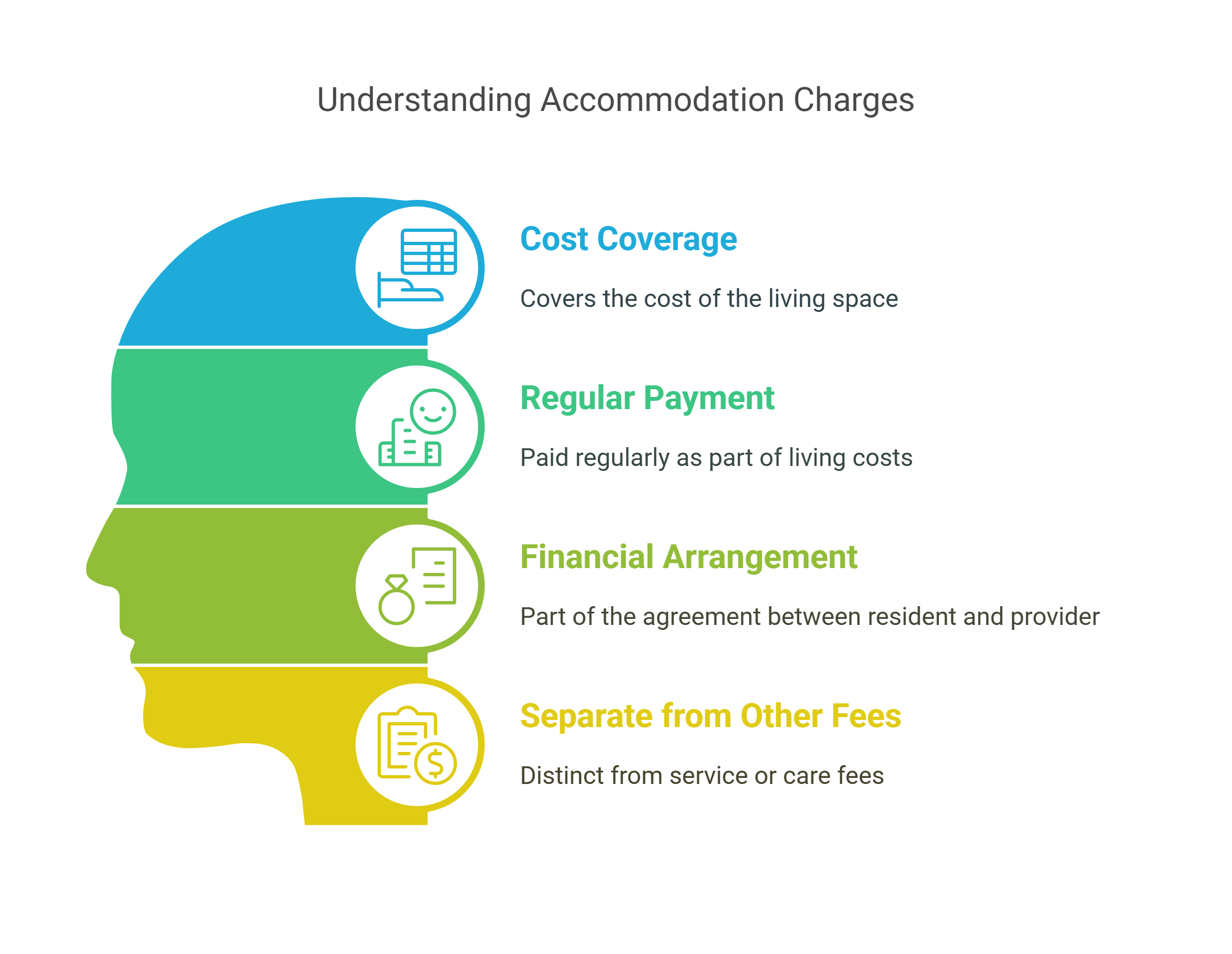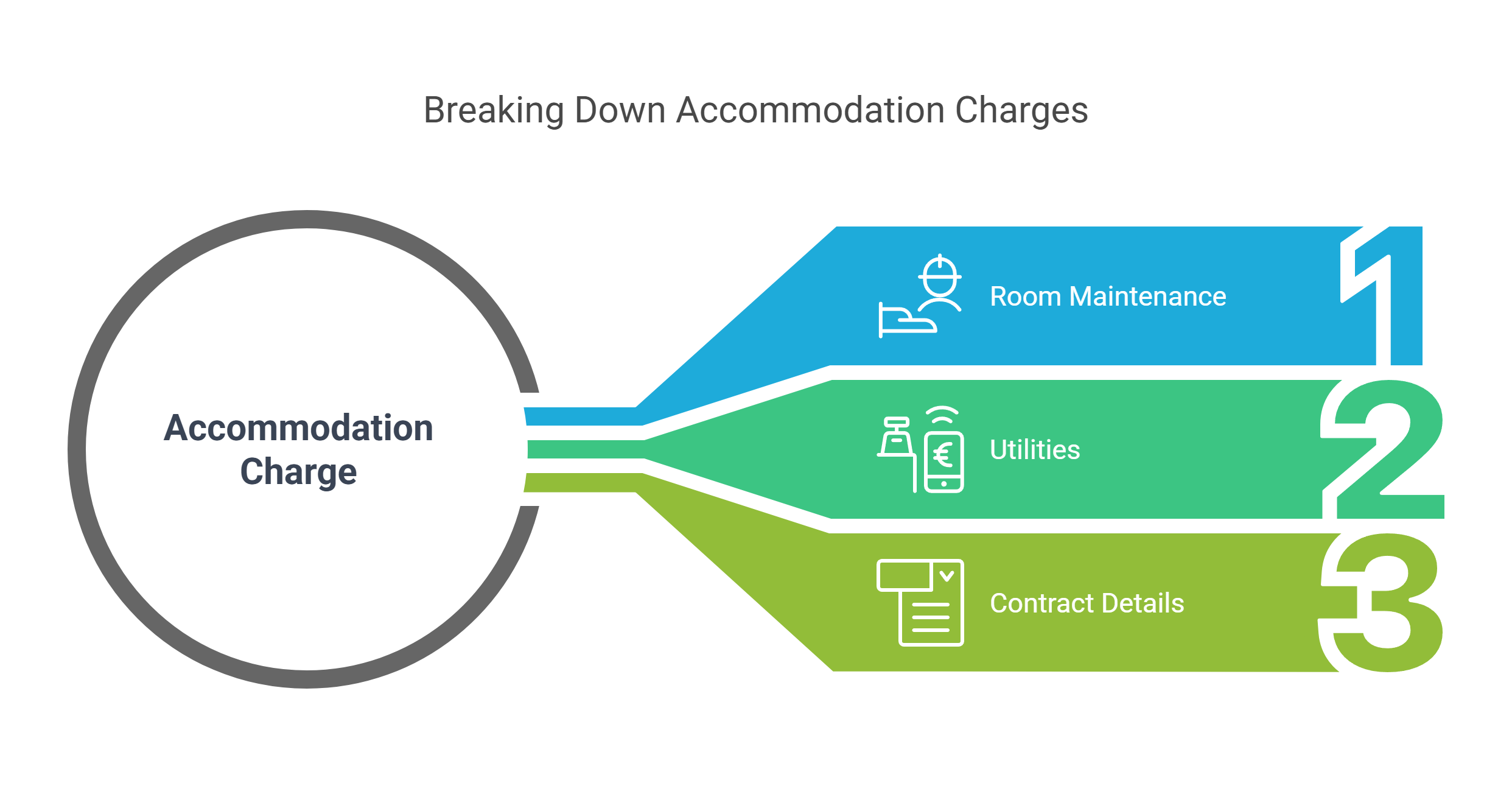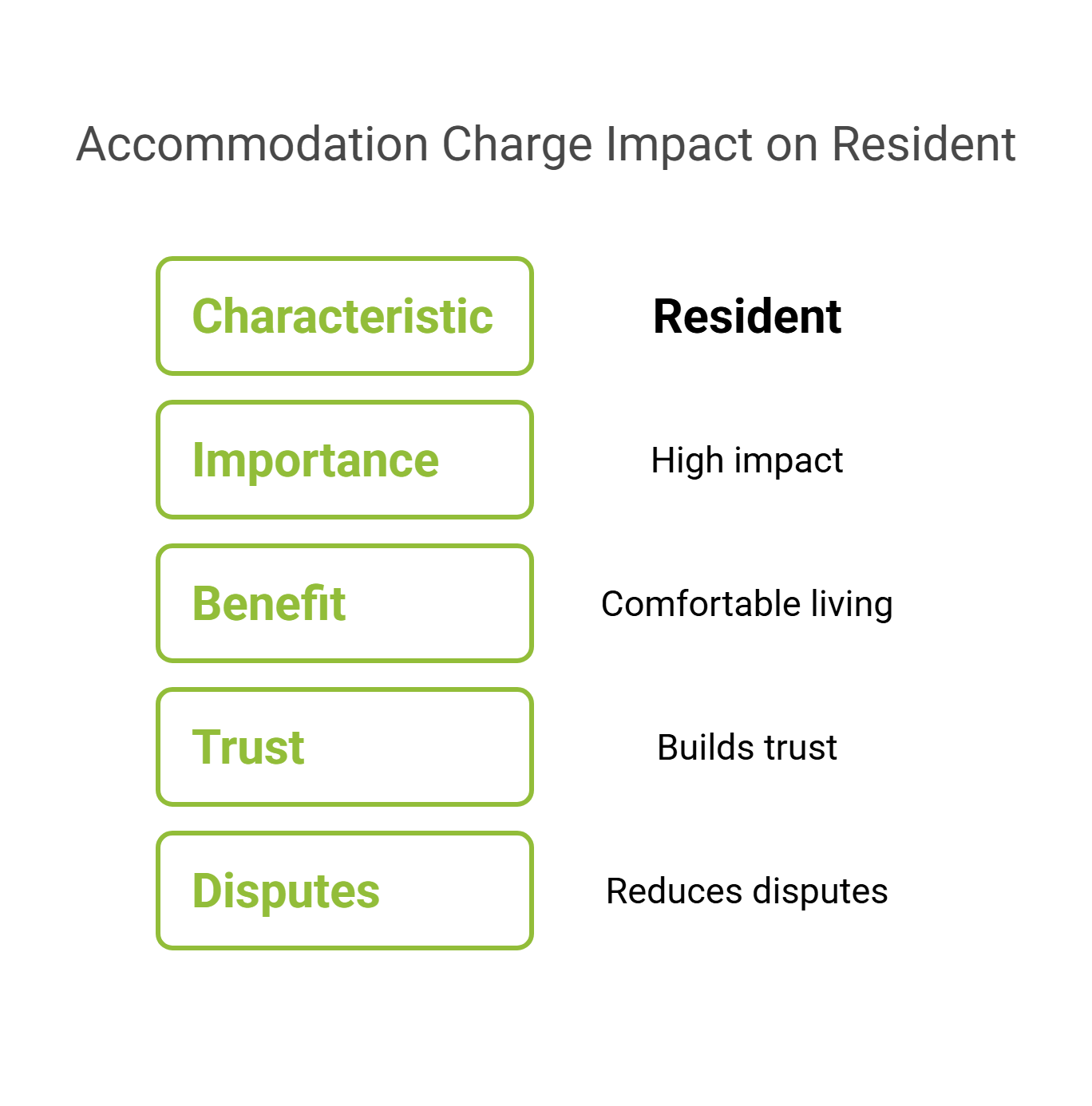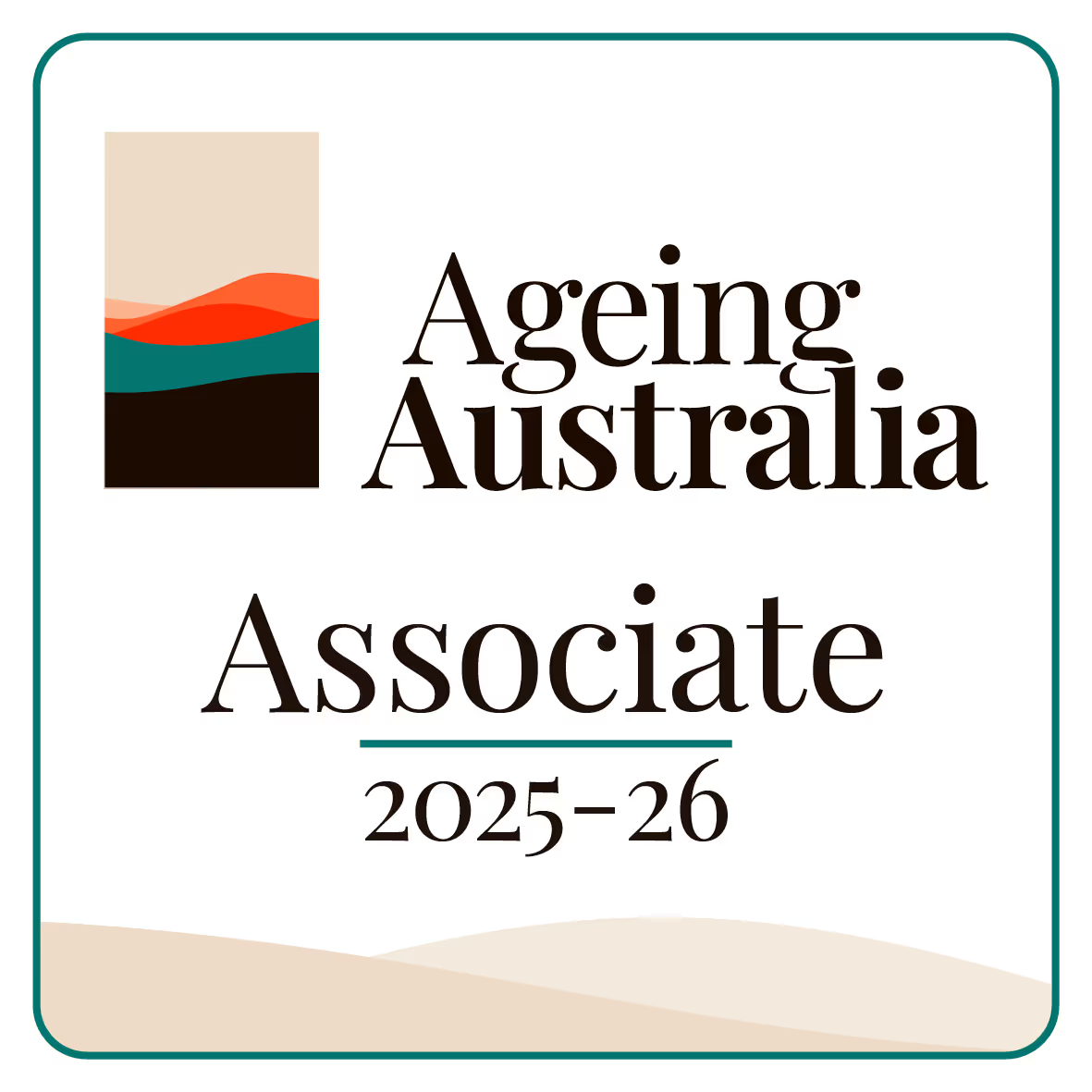What is an Accommodation Charge?

An accommodation charge is a fee that residents pay for the living space in a residential aged care facility. This fee covers the cost of the room or living area that the resident occupies. The accommodation charge is separate from other fees that may apply for services or care. The payment is made regularly and is part of the overall cost of living in the facility. Accommodation charge is an important part of the financial arrangement between the resident and the care provider.
How is the Accommodation Charge Calculated?
The accommodation charge is calculated based on the type of accommodation provided and the costs associated with maintaining the living area. The fee is determined by several factors, such as the size of the room, the quality of the living area, and the overall costs for running the facility. The method of calculation is described clearly in the agreement that the resident signs. The charge is not a one-time fee; it is collected on a regular basis, which might be weekly or monthly. This regular payment helps to cover the ongoing expenses of the facility.
Who is Responsible for Paying the Accommodation Charge?
The resident is responsible for paying the accommodation charge, although the responsibility might sometimes be shared with family members or other sources of funding. The fee is paid directly from the resident’s personal funds or through other approved funding sources. The clear assignment of responsibility helps to prevent any misunderstanding about the payment. Both the resident and the care provider have clear roles in this financial arrangement.
When is the Accommodation Charge Collected?
The accommodation charge is typically collected on a regular schedule. The collection might occur monthly or on another agreed schedule as outlined in the resident agreement. The scheduled payment system makes it simple for the resident to plan the payments. The schedule is explained at the time of admission so that there is a clear understanding of the payment obligations.
What Does the Accommodation Charge Cover?

The fee covers the cost of the living space in the facility. This includes the maintenance of the room, repairs, and the overall upkeep of the living area. The charge might also contribute to other related costs, such as electricity for the resident’s private space or water charges. The details of what is included in the accommodation charge are clearly described in the contract that the resident signs. This explanation helps both the resident and the care provider to have a common understanding of what is paid for by the fee.
How Does the Charge Affect the Resident?
For the resident, the accommodation charge is an important part of the total cost of living in a residential aged care facility. The fee is used to maintain a safe and comfortable living space. The resident benefits from living in a well-maintained room with access to the services provided by the facility. The clear description of the fee and its use helps to build trust between the resident and the care provider. The transparency of the charge reduces the chance of future disputes regarding the payment.

Record Keeping and Transparency
Both the resident and the care provider are expected to keep clear records of the accommodation charge. The records show how much has been paid and what costs are covered by the fee. If any changes occur in the fee structure, the care provider explains these changes to the resident. A detailed record is kept so that the resident can always review the financial arrangements. The clear documentation of the payments helps to avoid any confusion in the future.
Final Thoughts
The accommodation charge is a significant aspect of living in a residential aged care facility. The fee is designed to cover the cost of the living space and the related expenses that come with maintaining the facility. Both the resident and the care provider benefit from a clear, well-documented payment system. The information provided in the agreement and the ongoing record keeping create a transparent environment. This transparency helps all parties to understand their financial responsibilities and to maintain a positive living situation.






